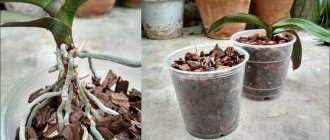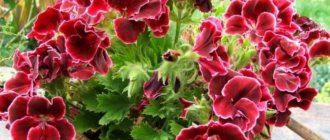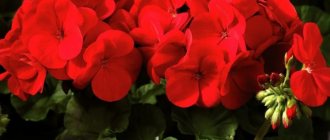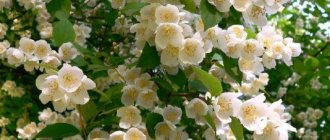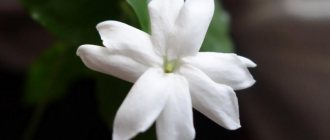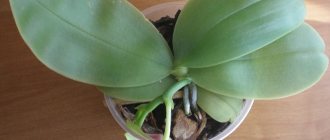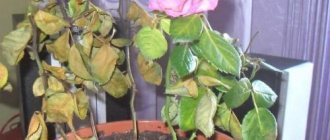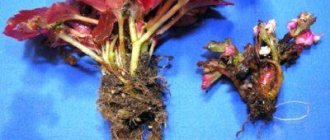Short description
Impatiens is a common indoor plant of the balsam family. It is very unpretentious in care, and also has very lush flowering, for which the British nicknamed it “Diligent Lizzie.” For another characteristic feature - the formation of droplets of moisture along the edge of the leaf - balsam is called “Vanka wet”. The official name of this plant is translated as “impatient”, because even with a slight touch, its fruits crack, scattering seeds.
Impatiens flowers are not very large, about 4 cm in diameter, and come in white, pink, red and yellow. Regularly shaped leaves in various shades of green. The bush is low from 40 to 60 cm. The fruit is a capsule.
Peculiarities
On a note. With the first days of spring, the plant begins to accumulate energy for the upcoming flowering.
Flower buds are laid, from which buds are formed. The plant's reproductive organs develop in the buds, and pollen matures for fertilization. Then the flower blooms. After the bud opens, some time passes before pollination, which at home, if you need to get seeds, will have to be done manually. Afterwards the flower withers and a fruit with seeds is formed.
When should balsam buds appear and bloom?
Impatiens blooms from early spring to late autumn. This applies to annual plants that grow in the garden. When the crop is grown in comfortable conditions, flowering lasts almost all year round. Flowering alternates with dormant periods lasting about 12 days. Buds begin to form with the first spring flowers. After some time, they begin to open into beautiful lush inflorescences.
Balsam
Additional Information! Flowering will occur all year round if the most comfortable conditions for balsam are created.
The necessary conditions
Even for an unpretentious plant, flowering is a very energy-intensive process and requires the following suitable conditions:
- The temperature must be maintained in the normal room range of 20 to 25 degrees. It is important to avoid sudden temperature changes and possible drafts.
- Lighting should be bright and long-lasting, with the exception of periods of scorching heat, when it is better to shade the plant.
- There are no strict restrictions on air humidity, but dry air near heating devices can interfere with the normal development of the plant. Therefore, the situation should be corrected by installing a tray with water over the pot, but the pot itself should be on a stand, without touching the bottom of the water.
- The container in which your balsam grows plays an important role. It must match the size of the plant's root system. The roots should not rest against the walls, but too much free space will not be beneficial. There should be drainage holes in the bottom of the pot for bottom watering and drainage of excess liquid.
- The soil should be light, porous, fertile, the reaction should be neutral or slightly acidic. In the store you can buy a soil mixture for begonias, which is also suitable for balsam. It is necessary to lay drainage under the soil, which will protect the roots from rotting.
Damage by pests and diseases
You need to carefully examine the plant: perhaps its vitality is weakened by spider mites, whiteflies or aphids. As an emergency aid, treat the affected areas with soapy water and a warm shower. However, the most effective way to eliminate these insects is a systemic insecticide .
If a constant excess of moisture in the soil is combined with low temperature (excessively cool room or watering with cold water), rotting of the stems and root system .
In this case, the balsam is not at all ready to bloom. It is necessary to remove damaged parts and urgently optimize watering and temperature .
In the case of an advanced process, you should select healthy cuttings for propagation, root them and keep them in optimal conditions, and get rid of the rest of the plant and wash the pot well.
A healthy plant in a slightly cramped container, not affected by pests, standing in bright, mostly diffused light, at a temperature of about 20 degrees, moderately watered with regular spraying, will fully display its abundant tropical nature.
Flowers of characteristic shape with spurs, single and double, with a border or spots, white, pink, carmine and purple, will cover the impatiens from March to November.
Read more about the causes of balsam disease and flower treatment methods in a separate article.
Next you will see a photo of Balsam flowering:
Care Tips
Reference. It is not enough to provide the necessary conditions; the plant also needs to be properly cared for.
- Balsam requires abundant watering The soil should never dry out. However, the reverse error should also be excluded, when the soil is flooded to such an extent that it looks more like a swamp. The soil should always be slightly moist, but not wet. The best choice is watering through a tray; this option does not require you to estimate how much water is needed. You just need to place the pot in a container of water for 20-30 minutes. The water must be at room temperature.
- Fertilizing is required for flowering plants in pots. Otherwise, where will they get energy and all the necessary substances? You need to feed with complex mineral fertilizer for flowering plants. This is done every 10-14 days while the plant is blooming. Nitrogen fertilizing, on the contrary, can lead to a stop in flowering and the growth of leaves and shoots.
- Pinching , as well as removing faded buds, has a beneficial effect on flowering. However, it is worth remembering that each pinching delays the time of flowering. Pinching is done in the spring, shortening the main shoots. As a result, the plant will be more bushy, with short internodes, which means the flowering will be abundant. In this process, you can also remove shoots that are too long, weakened and unsightly. Just be careful not to overdo it so as not to stress the balsam too much.
- Transplantation is a necessary care measure. It is worth doing it as soon as the roots have completely mastered the earthen lump in the pot. But it is more advisable to do this at the same time every year, for example, in the spring. The new flowerware should be slightly larger than the old one, just a couple of centimeters in diameter.
Secrets
In growing this plant, there are generally no secrets to abundant flowering, but there are nuances that, along with good care, will help indoor balsam bloom:
Provide the balsam with proper rest during the cold season. This is really very important. There is no need to squeeze all the juices out of the plant and force it to bloom all year round. Flower buds begin to form during the dormant period. In addition, the plant needs rest for new activity. From November-December, provide the flower with a cool place of 15-18 degrees with soft, short-term lighting. Do not water frequently, only when the surface of the soil dries out. Don't feed it any fertilizers, it simply doesn't need them.- Balsam loves fresh air. Therefore, walking a pot of balsam outside even for the whole summer, or just daily airing, has a very good effect on the flower.
And planting in open ground can improve the health of balsam and transform it beyond recognition. Important! The area for planting balsam must be protected from strong winds.
Causes
Let's look at the reasons why flowering may not occur or may be scarce:
- The necessary conditions for the flower are not provided. The temperature is too low or high, drafts, cold soil in the pot. Insufficient lighting. Low air humidity. Poor soil: acidic, clayey, with little nutrition. Capacity too large.
- Care is performed incorrectly. Watering is poor, excessive, or with hard and cold water. Lack of mineral fertilizers, as well as excess nitrogen. Aggressive pinching that removed too many shoots. Careless handling during transplantation.
- The plant is sick (you can find out about the causes of diseases, prevention and treatment methods for balsam, as well as see photos here).
- Pests have infested.
- There was no period of rest.
- The plant is under stress, which can result from a gross violation of the rules of care and maintenance.
We recommend that you familiarize yourself with our materials on how to treat a flower from diseases and pests, and also why balsam has:
- buds and flowers fall;
- leaves fall;
- the leaves turn yellow.
Why doesn't indoor impatiens bloom?
If the flowering of balsam suddenly stops or does not begin at all, you need to carefully check the conditions in which the plant is kept , literally point by point:
Illumination
In tropical Asia and Africa, the homeland of balsams, the days are long and full of sunshine. Therefore, first of all, those plants that experience a lack of lighting . You need to move the container to a brighter place (but not in the sun). If this is not possible, or daylight hours have shortened due to the season, you should definitely organize additional lighting.
Temperature
The optimal temperature in summer is 20-22 degrees , in winter - not lower than 15 degrees . This value, +15ºС, is critical : at lower temperatures, flowering stops.
Watering
The soil in the container should always be moist (but not stagnantly wet) .
Air humidity and freshness
If the plant is kept at a temperature of 20 degrees or higher , regular spraying ; in this case, the splashes should not fall on the flowers.
In the summer, “vacations” in the open air , on the balcony, with protection from the intense midday sun, are very desirable.
What to do?
Of course, first of all, you need to completely re-read the list of conditions of detention and care rules:
- We check the balsam for the presence of insect pests. If they are found, you can destroy them mechanically, that is, manually, or treat the flower with an insecticide (you can find out how to deal with spider mites on balsam here).
- We check for infection. If suspicious spots, rotten areas, changes in leaf color, and other unhealthy features are found, you need to treat the plant with fungicides. And most likely, replanting into new soil will be required. When replanting, the roots of the plant must also be inspected and all rotten areas removed.
If nothing is found on the first two points, and it’s summer outside, then you can try replanting in open ground. Impatiens will experience a favorable shake-up and will receive a lot of sun and fresh air. As a rule, after such an operation the balsam blooms.- If it’s already cold outside and the balsam still hasn’t bloomed, you can try changing the mineral fertilizer. Choose a reputable grower and try feeding the plant once every 10 days.
- If the shoots are very thick and long, the leaves are dense and there are too many of them, then your balsam is “fat.” There was too much humus in the soil, and, consequently, nitrogen. Replant your “fat” Vanka in poor soil. To do this, you can dilute the usual soil with peat, or take turf soil in half with sand.
Now you know what to do if the balsam does not bloom.
Reproduction methods
Flower growers practice seed and vegetative propagation. Both methods are effective, but sowing seeds from a hybrid plant can give unexpected results - the main characteristics of the variety change. To obtain seedlings of a certain variety, store-bought seeds are often used.
Seeds
The favorable period for seed propagation is spring. But if you sow the seeds in February, you can get a beautiful flowering bush in May. A mixture of sand and peat is used as a substrate. To obtain strong seedlings, a certain sequence of actions is followed.
- Seed preparation. Planting material is soaked for ten minutes in a weak solution of potassium permanganate, washed and filled with warm water for an hour. The seeds are slightly dried.
- Landing. The container is filled with pre-prepared substrate. Seeds are distributed over its surface and sprinkled with a thin layer of fine sand on top. The container is covered with film.
- Conditions for germination. Maintain a stable temperature in the range of 18–20 ˚С. Once every two days, open the greenhouse, remove excess condensation, and moisten the soil with a spray bottle as necessary. If possible, install additional lighting.
- Picking. After two true leaves appear, the seedlings can be planted in separate small pots.
- Topping. At the stage of five to nine leaves, the young plant is pinched to stimulate branching.
Cuttings
Reproduction of Vanka wet by cuttings allows you to quickly grow a young plant to replace the old one. Cuttings are specially cut or the apical shoots remaining after spring pruning are used. Rooting is carried out in the following sequence.
- Preparation of cuttings. The optimal cutting length is 5–6 cm. The upper leaves are cut in half, the lower leaves are cut off completely.
- Root growth. The cuttings are placed in water with the addition of activated carbon tablets and root formers.
- Landing in the ground. After the roots have formed, the cuttings are placed in light soil. They are kept under film for a week to smooth out temperature changes and maintain stable humidity.
- Topping. The growing point of a young plant is pinched to stimulate branching.
The bush can be made more lush if several cuttings or seedlings are planted in one pot at once. A distance of about 5 cm must be maintained between plants. Flower growers recommend planting seedlings of the same variety in a common pot.
